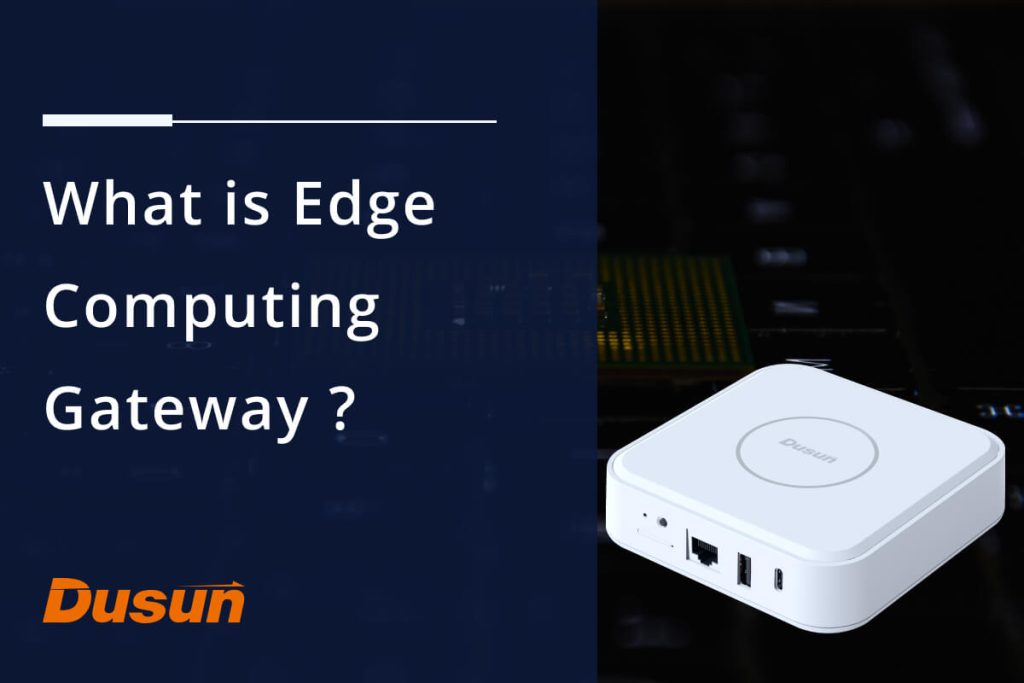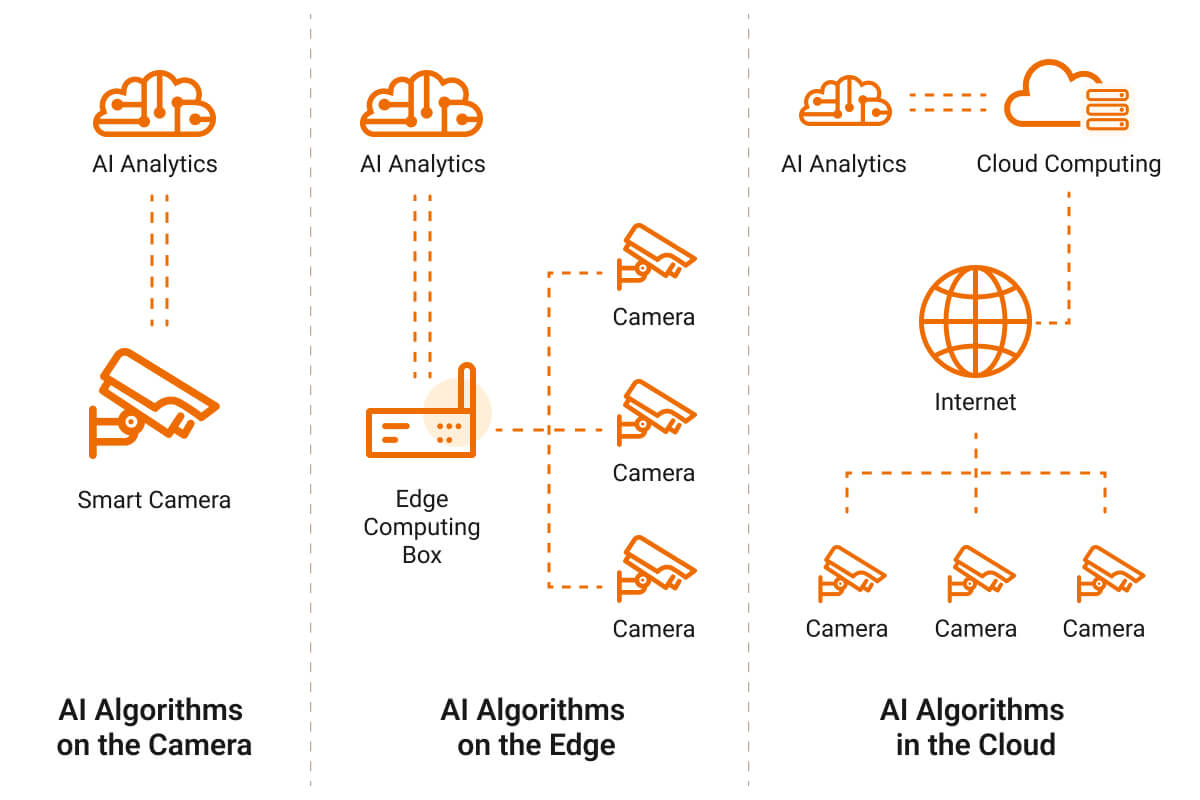Edge computing refers to an open platform that integrates network, computing, storage, and application capabilities on the side that is closest to the data source to deliver the end service. Its applications are usually operated on the edge side, enabling faster network service responses, and satisfying the fundamental requirements of the industries requiring real-time business, artificial intelligence, security and privacy protection.
Edge computing is the term for computing that takes place near to where things, data, and actions originate. Smart devices for edge computing can be IoT terminals with specialized processing capabilities, IoT gateways or routers with certain data collection and data computing capabilities. This article will explain in detail what an edge computing gateway is.
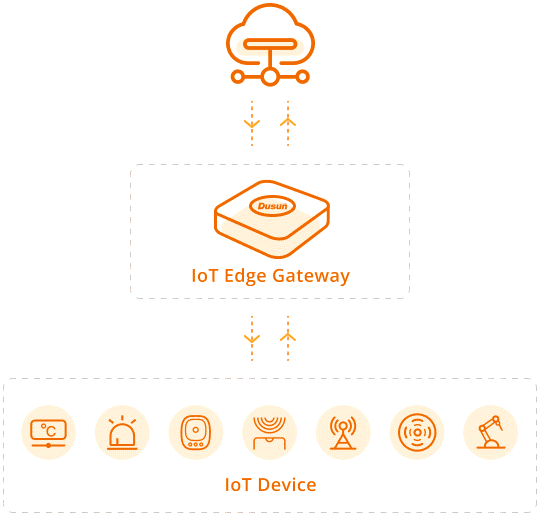
What is Edge Computing?
In order to deliver near-end computing and services, edge computing devices combines network, computing, storage, and application on the side near the source of objects or data. More and more technological companies have started their own business layout on edge computing. As a result, concepts including smart factories, smart cities, smart manufacturing, and smart retail will become more and more prevalent.
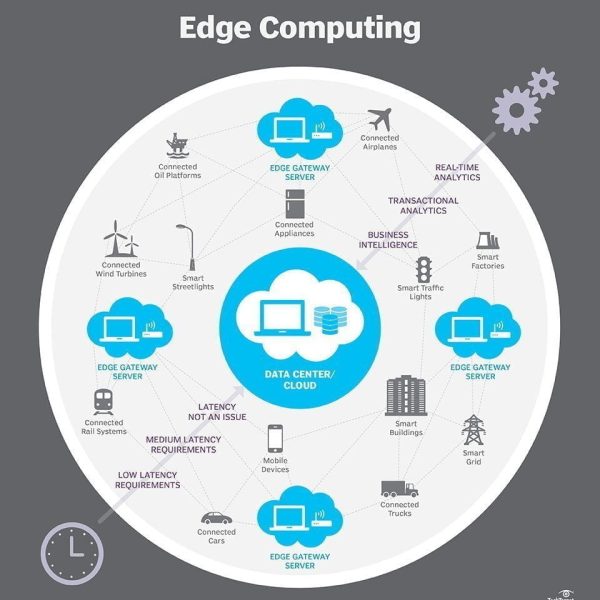
In the process of using IoT edge computing technology, these business need to employ a wide range of smart gateways, edge devices, and the cloud in order for data gathering, processing and storage. These devices, together with the distributed database and data processing, constitute a complete edge computing system. But this system does not exist independently, and there will be a lot of data transfer and application interaction between it and the cloud computing platform.
Why Do IoT Gateways Need Capabilities for Edge Computing?
Enterprises often deploy large numbers of IoT devices for their IoT solutions, which presents challenges in managing and monitoring them. IoT gateways are concentrators that connect IoT devices to cloud and facilitates bi-directional data transfer. IoT sensor data can therefore be uploaded for processing, and cloud-based apps can send commands to IoT devices.
The addition of edge computing capabilities to IoT gateways can reduce network traffic and latency while resolving the issue of insufficient central processing power brought on by the massive amount of data. The following will introduce in detail:
Managing Ever-growing Data Volumes
The amount of data generated globally increases exponentially with the accelerated development of the Internet and rising number of IoT devices. It can be estimated that there will be a significant change every ten years as a result of fast acceleration of 5G technology and the advancement of hardware CPU computing capabilities, and it is no doubt that the rise of data volume will also reach a horrifying level. Everything is going to be digitized, and powerful edge computing gateways are needed to cope with ever-expanding data volumes.
Curb the Rising Cost of Cloud Computing
Cost savings are one of the main motivations for implementing edge computing. As we mentioned before, the cost of computation and storage will rise exponentially as the number of data volume and users grows. Generally speaking, the required servers of different user scales can be shown as follows (roughly estimated):
| User Scale | QPS(Query Per Second) | Needed Servers | |
| 1 | 100,000 | 100 | 10 |
| 2 | 1,000,000 | 1,000 | 50 |
| 3 | 10,000,000 | 10,000 | 500 |
| 4 | 100,000,000 | 1,000,000 | 10,000 |
As shown in the table, the number of users increases nearly 100 times from 100,000 to 100,000,000. Why do servers shows a 1000-fold increase? Because when the volume increase, the architecture becomes complex, various tasks, such as caching, queues, service discovery, gateways, automated operation and maintenance, monitoring, etc., become a must.
If we adopt decentralized edge computing, a lot of computing work will be done at the edge, which will greatly lower server investment and greatly reduce costs.
Share Computing Burden
By deploying IoT edge gateway devices to effectively processing enormous amounts of data generated by IoT terminals nearby, numerous issues aroused with the cloud central computing capacity can be easily solved. Edge computing can theoretically meet the key requirements of many industries in terms of agility, real-time performance, data optimization, AI intelligence, and security and privacy protection.
Benefits of Edge Computing Gateways
IoT devices generate large amounts of data. When a business has a significant ecosystem of IoT devices and wishes to transfer data from all of those devices to the cloud, those IoT devices may use all of the business’s internet bandwidth, and cloud storage is expensive.
Such issues can be avoided by using edge computing for only deal with some fundamental and valuable data. By limiting the quantity of data that needs to be sent to the cloud, this method aids in cutting expenditures and bandwidth utilization.
Consider a business that has a fleet of IP-enabled security cameras send all of their raw surveillance footage to the cloud for processing. When several cameras are mainly focused on vacant spaces,sending the raw surveillance footage to the cloud certainly doesn’t make sense and waste the bandwidth. It is more effective to process video footage at the edge rather than upload all surveillance material at once to alleviate this bandwidth-wasting scenario.
The edge device can distinguish the meaningful clips that the enterprise thinks worth keeping from the irrelevant clips, and send the video clips that need to be reviewed to the gateway device, which then uploads the data to the cloud. As you can see from this example, an IoT edge computing gateway is essential to assist organizations in lowering IoT-related bandwidth usage..
Architecture of IoT Edge Computing Gateway
The IoT edge gateway infrastructure consists of four architectural levels:
- Network layer: At this layer, data from various sources is compiled and sent to the processing system in a secure manner. The data acquisition system (DAS) is responsible for performing data aggregation and format conversion. At this layer, IoT edge computing gateways can securely connect IoT devices and processing infrastructure.
- Sensor layer: At the sensor layer, devices gather data for later processing.
- Data pre-processing layer: .Before being transmitted to the cloud-based infrastructure, IoT sensor data is pre-processed at this layer and goes through fundamental data analysis. IoT edge devices operate at this layer.
- Cloud application layer: Users and apps can access data and the outcomes of in-depth data analysis thanks to cloud-based infrastructure. Data storage is also feasible at this layer.
Composition of IoT Edge Computing Gateway Devices
An edge computing gateway is a type of IoT gateway device that bridges the communication gap between cloud-based IoT platforms, sensors, devices, and systems. IoT edge computing gateway devices typically provide local processing and storage solutions, as well as the capacity to autonomously manage field devices based on sensor-input data.
Hardware for IoT Edge Gateways
An IoT edge gateway sits at the juncture of edge systems, serving as the main access point for network connections inside and outside the device ecosystem. It can connect your ecosystem’s local intranet, which is used by other devices, to the public internet.
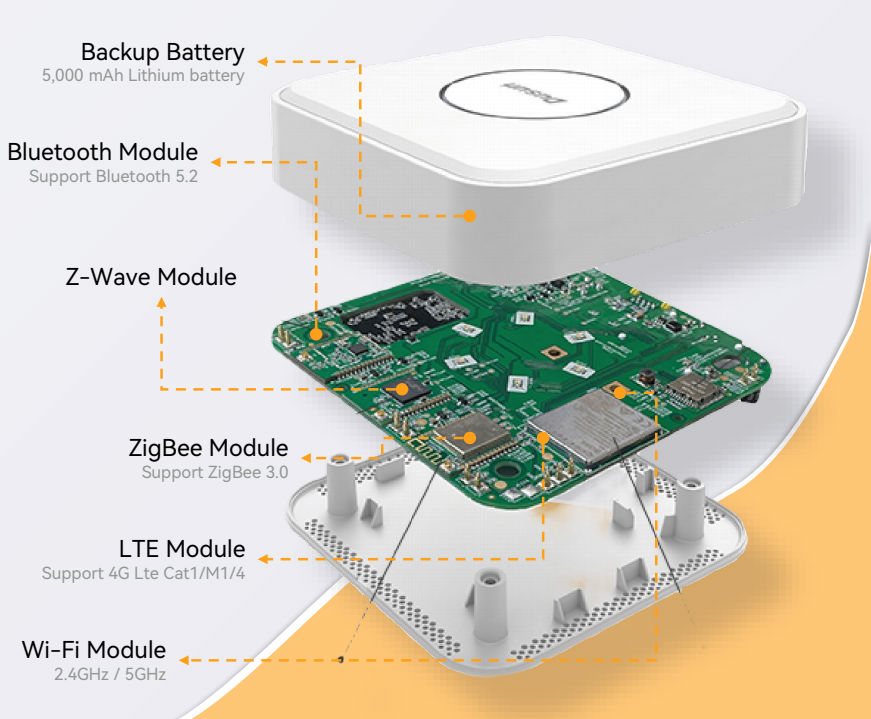
Software for IoT Gateway
In the case of the Industrial Internet of Things, for example, IoT gateway software improves the transparency of machine and process data. It employs rules to examine particular data in order to ensure that your output meets high standards. It also monitors process data in real-time, including temperature, pressure, vibration, and more.
How Does an IoT Edge Computing Gateway Work?
Whether your business is preparing to invest extensively in IoT or merely wants to start using some edge computing devices, deploying IoT edge computing gateways will provide both short-term and long-term benefits. Let’s see how it works.

Connecting IoT Devices
Similar to a universal remote, an IoT gateway allows you to control all of your devices from one location, saving you time and effort. Similarly, an IoT edge computing gateway acts as a central hub for data transfer between connected devices. Through the cloud, people and IoT devices are able to communicate with each other. When you send or receive information to IoT devices, IoT gateways and cloud-enabled software are utilized to communicate with IoT devices.
On the other hand, IoT gateways allow a rising number of IoT devices and smart sensors to connect with one another, facilitating the communication by filtering data into useful information, and streamlining their functioning throughout the physical space.
Data Filtering
IoT edge computing gateway facilitates communication by filtering data into valuable information, as well as by enabling connectivity between devices. Since IoT devices can gather fresh pieces of data in just a fraction of a second, looking at every record would be pointless and slow down their operation and connection.
IoT edge computing gateways can operate at the edge, checking the provided data and analyzing the it before delivering. Only the necessary data is sent to the cloud to improve response times.
Translating Communications between IoT Devices
Although IoT devices are rapidly integrating into our daily lives and new services and products are emerging to improve almost every area of our lives, there is currently no universal standard for IoT device language. Protocol conversion gateways grow more crucial when more IoT devices are added because they make it easier for them to communicate with one another.
Strengthening Security
IoT devices raise more security issues as more are added. All IoT devices are vulnerable to external interference and hacking, but an IoT gateway adds another layer of security between the internet and the physical device.
Intelligent Edge
An IoT gateway is a prime example of an “active intelligent edge”. This means that data can be translated and processed by the IoT gateway itself, without the assistance by third parties entities or individuals.
Application Scenarios of Edge Computing Gateways
What scenarios call for edge computing gateways as the introduction of edge computing into IoT gateways is inevitable? When organizations need to deal with some real-time response businesses (like instantly respond to some local demands from the user, such as unlocking shared bicycles and using a face recognition system for access management), gather and structure data (like extracting the license plate information in the video, textify it, and transmit it back to the data center), implement real-time device monitoring (mainly data collection and monitoring of offline equipment), and some decentralized P2P applications (the edge node can facilitate P2P communication between nearby devices when acting as a service discovery server), they will need IoT edge computing gateways.
There are a wide variety of edge computing application scenarios, many of which we cannot even begin to envision. We can give the following use examples for reference:
- Electricity: Control of street lamps, real-time monitoring and alarming of urban power grid’s voltage and current data, or solar panel monitoring;
- Security: remote access control system, and anti-theft device alarm;
- Energy: data collecting from oil fields, coal mines, oil, natural gas, and monitoring of heating systems;
- Traffic: Vehicle license plate monitoring system, monitoring of vehicle infractions, traffic light control;
- Environmental protection: Collection of real-time data for monitoring and maintenance of tap water, sewage pipes, pumping stations, and water plants.
Final Words
It goes without saying that edge computing gateways are essential in the IoT age. As we have previously covered, edge computing gateways are in charge of processing and analyzing data from devices in order to make them responsive in real time for applications that require low latency.
While edge computing has numerous benefits, it also presents a number of difficulties, such as managing and maintaining distributed devices, handling massive amounts of data, and ensuring network security. Therefore, the success of IoT applications depends on selecting the appropriate edge computing gateway platform and architecture, as well as on its efficient configuration.
The Dusun IoT’s programmable gateway supports a number of IoT operating systems and enables users to add new features using a number of programming languages and create related functions in accordance with project requirements, such as serial communication, protocol analysis, uploading to the cloud, etc. We provide an abundance of documentation and open source drivers so that users may swiftly execute the necessary tasks. Processing chips, memory chips, storage chips, communication modules, and power devices all adhere to industrial-grade standards, making them resistant to the severe environment found in industrial sites.









